Exclusive oysters and the ‘wagyu of lamb’ head to the family dinner table, direct
Specialist suppliers to Australia’s restaurants have been forced to go retail to keep their businesses afloat. Many say they’ll never do business the same again.
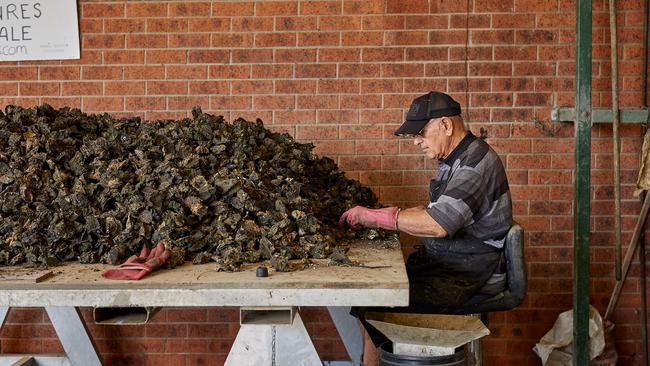
It seemed like a restaurant takeover; 12 months ago there wasn’t a high-end diner in Western Australia that didn’t have Mottainai lamb on the menu, and the eastern states were the next target.
The lamb Suzannah Moss-Wright wasn’t selling to the top chefs of Perth and Margaret River was finding its way into the top hotels of Southeast Asia — whole carcasses, broken down, the way a farmer and meat producer likes to sell. Emirates first class had just put her lamb on. Moss-Wright’s lamb is special: it’s “finished” with a cocktail of unused vegetables from nearby farms, such as carrots too ugly to sell, carrot tops, carrot pomace and olive oil sediment (an investor in her brand is a well-known WA olive oil producer).
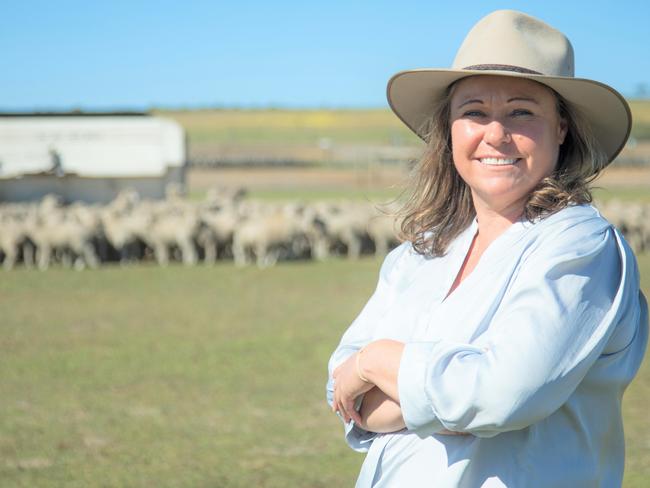
And there were parallels in the narrative with that of celebrity Wagyu breeder David Blackmore, whose product has been championed since the noughties by the chef Neil Perry. Indeed, Moss-Wright, whose farm is north of Perth near Lancelin, had been successfully marketing her marbled meat as “the Wagyu of lamb”.
“This is the perfect example of a product the public simply could not buy pre-COVID. This lamb was unobtainable unless you were in the industry,” says Phil Clark, who now is selling Mottainai retail through his Perth-based distribution company Fins.
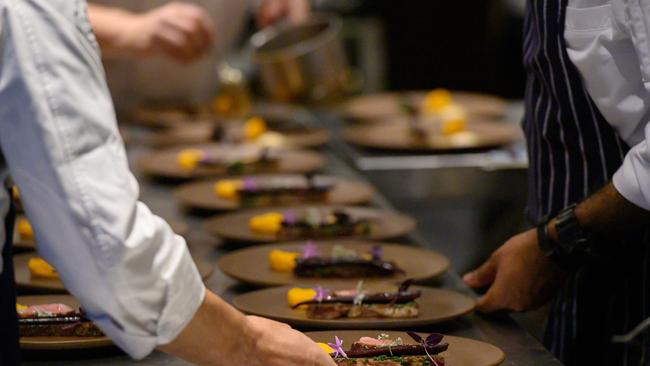
Moss-Wright has set up other distribution deals to home-deliver sales that go through her own website, chalking up $22,000 in the first 10 days.
She describes the new reality of direct consumer trade as “the silver lining we can take forward from all this … the old supply chain was broken, archaic,” she says.
“We have learned to use our phones, our computers and work together. I’ve always wanted it to be in retail, but the model didn’t work. Home delivery was too much and the existing retailers wanted to mark up too much.
“I only want people in the supply chain who add value.”
We may not be eating in restaurants any more, but if there is any upside to the crisis it’s that the gear our favourite chefs use is finding its way into our homes more than ever.
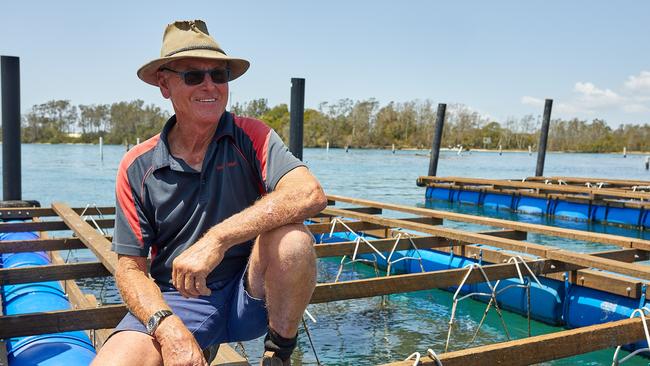
Agribusinessman James Garton goes one step further. The chairman of East 33, a vertically integrated business controlling 154ha of Sydney rock oyster leases along NSW’s coastal estuaries, describes the new environment of “consumer-facing business” as “a paradigm shift”.
“This time will be forever remembered as the moment when great access to great product became viable,” says Garton, likening the shift to home-delivered groceries or even home schooling.
“For premium producers of product there is always a market, and this has created an environment for that market to shift from restaurants to the consumer at home.”
With growing, processing and distribution already under the one “corporate roof”, East 33 found itself tooled up and ready to go with a nascent direct-to-consumer model when its 500-odd restaurant customers stopped ordering.
“A lot of people are still of the opinion that oysters are oysters,” says Garton. “As a rule, the premium stuff is reserved for restaurant customers. This whole COVID disaster is a catalyst for us, not a pivot … and I think that for the industry overall it will be expansionary.”
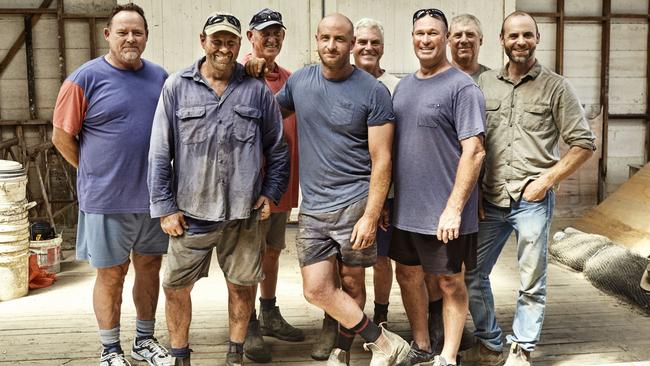
Seafood is the category that has had to adapt quickest. Specialist distribution companies, with relationships with fisheries and individual fishermen, warehousing, processing and distribution infrastructure, have had to switch focus to consumer sales rapidly and, for some, for the first time.
In every major city of Australia, distributors such as Melbourne’s Ocean Made or Sydney’s Joto suddenly find themselves selling specialist product, such as line-caught coral trout from Queensland’s Great Barrier Reef, direct to consumers via retail premises or e-commerce, or both.
According to Ocean Made’s George Lucas, premium produce that used to go straight to the chefs and now frequently is on his retail website includes scarlet prawns from Moreton Bay, Abrolhos Islands scallops and octopus, and hand-selected oysters from NSW. Overall, he says, there are higher grades in just about every species at lower prices.
Walker Seafoods, one of the largest harvesters and processors of yellowfin tuna in the country and hitherto a supplier of whole fish to restaurants such as seafood specialist St Peter in Sydney, has just done a deal with Coles to sell Mooloolaba-caught tuna, to be processed into steaks, at 150 supermarkets on the eastern seaboard, at $35 a kilogram retail.
“If you were buying this grade of tuna down at the Sydney Fish Market, you’d be looking at easily $70 to $80 a kilo,” co-owner Heidi Walker says.
“We own five boats and have a staff of 50,” she says to explain the necessarily pragmatic deal.
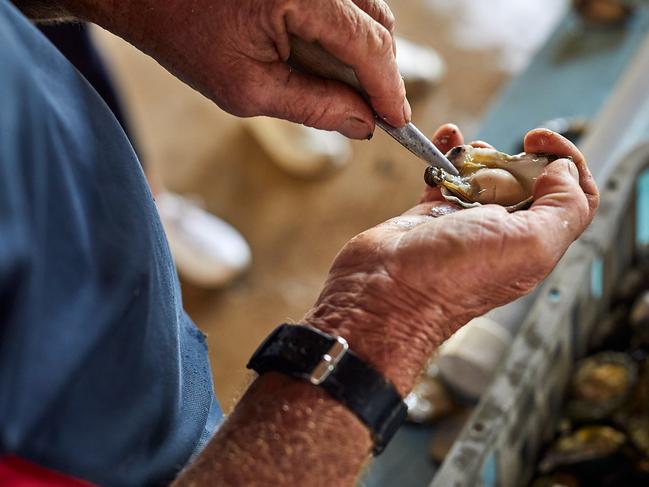
People such as Brendan Sheldrick, of Eugowra Game Birds, 400km west of Sydney — who used to deliver his chicken, quail and guinea fowl almost exclusively to chefs — now are driving around Sydney once a week delivering to people who have ordered online from their home.
“It’s a whole new business for me, but I don’t want to abandon the customers who were the foundation of my business either,” Sheldrick says.
Others such as Perth mushroom grower Adrian Acquado, whose entire customer base was restaurants and the wholesale market, are doing the same.
“Our crops are planned months in advance; they’d be coming through regardless of what was happening in the world, so we had to adapt quickly,” he says.
An online store was developed almost overnight. “We never expected the support and response from the public we’ve had. After Australia returns to some normalcy, we will continue to sell to the public, for sure. It has supported us through this. It's changed our understanding of the market in Perth and the way we operate our farm dramatically.”
Then there are those signature dishes built around a specific piece of produce — developed in conjunction with chefs — that some suppliers have never sold to the public before.
Lennox Hastie, the chef/restaurateur at Sydney’s Firedoor, calls them part of the “magic arsenal” and there is no clearer example than Hastie’s internationally famous 203-day dry- aged rib of beef for $220.
Others on the “new retail” list would be Bennelong’s dry-aged Kurobuta pork chop or Icebergs’ Wagyu “chuck tail flap” from Blackmore’s cattle.
“That is potentially the most bespoke, the most exclusive steak in the world,” says meat supplier Anthony Puharich, of Vic’s Meats, the biggest premium restaurant supplier for meat in the country, “and I promised Lennox it would always be exclusively for him.”
The ageing process for the beef is special and time-consuming. “It was only ever available at Firedoor, and only to someone with deep pockets.” Puharich had, until recently, 1.5 tonnes of the beef put aside for Firedoor — a year’s supply — and Firedoor isn’t ordering any more; so anyone prepared to pay $150 per kilo now has access to the Firedoor steak.
“Four weeks ago, I thought my world was caving in around me,” says Puharich, who deals primarily with restaurants. “I’m used to dealing in tonnes and palettes, not packets.” He put the Firedoor beef into his premium Woollahra retail outlet Victor Churchill and “it had some success, but not enough”.
“Three weeks ago, we launched an online retail site for Vic’s (the wholesale division) and it’s been the most wildly successful thing. It might just pull me out of the fire. The whole 1.5 tonnes will be gone by the end of next week (at April 22).”
Going retail “has been a very sobering experience” says Puharich “but you know what? You get your money straight away.
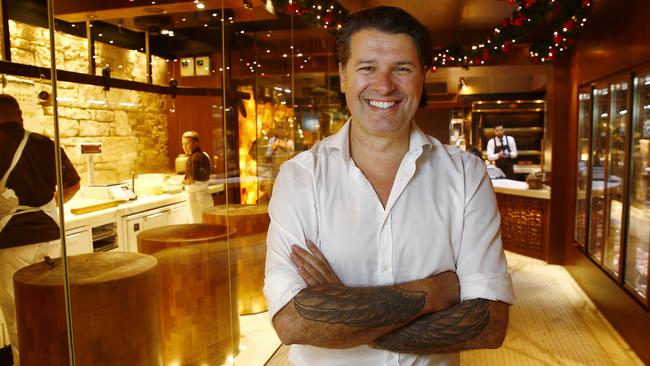
“It’s a luxury I’ve never had before. I’m programmed to sell, and wait, and cross my fingers. This will change our business forever. It’s been a huge awakening, a massive reset.”
The businessman says he has had a big rethink on the notion of carrying risk with wholesale customers, who typically buy 35 tonnes of meat a week from Vic’s, divided between its Sydney and Melbourne operations.
“I’ve eaten in a lot of restaurants, but I’ve never been into a restaurant and written on the back of the bill ‘pay you in three weeks’,” he says.
“My father and I started this business from nothing. Turning over zero doesn’t make you happy and turning over $100m doesn’t necessarily make you happy either. There’s a lot of stress.
“But I’m determined to find a middle ground, and greater final-consumer focus is definitely a part of that.”




To join the conversation, please log in. Don't have an account? Register
Join the conversation, you are commenting as Logout